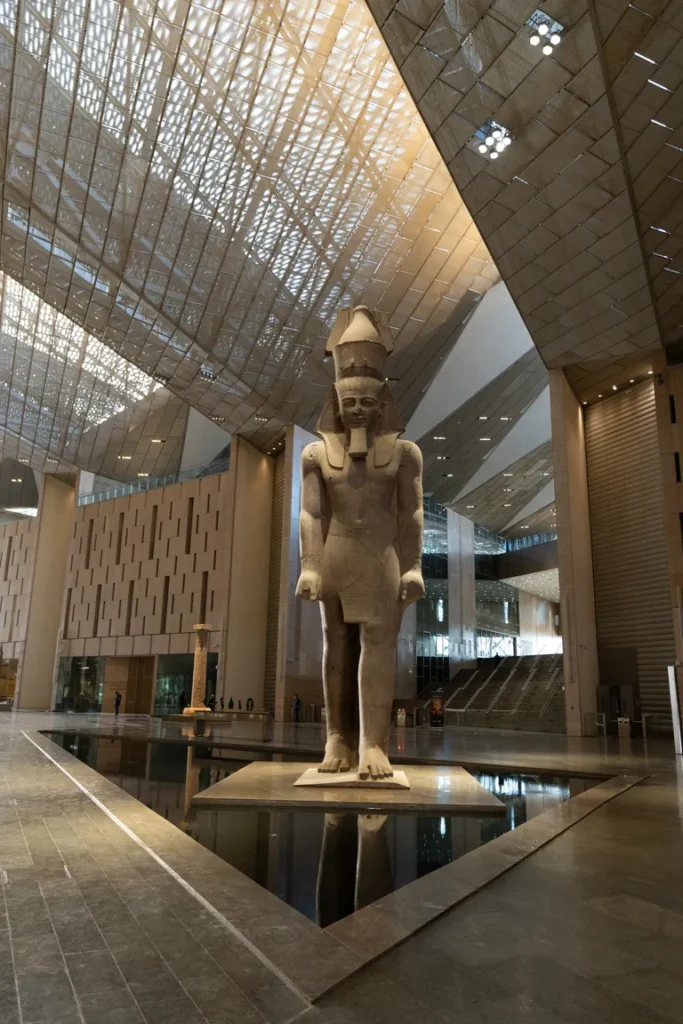The highly anticipated Grand Egyptian Museum has been completed by Heneghan Peng Architects. Located just over a mile from the Pyramids of Giza, the landmark institution will showcase more than 5,000 artefacts and is set to become the largest museum in the world dedicated to a single civilisation. Its Tutankhamun Gallery will open to the public on November 1 2025.The project originated from an international architecture competition held in 2003, won by the Dublin-based firm, which then collaborated with Arup and Buro Happold. Their design was envisioned as a bridge between ancient history and modern innovation. ‘Designing a museum of this calibre, in such close proximity to a landmark as monumental and symbolic as the pyramids, is a once-in-a-lifetime opportunity,’ says Heneghan Peng founding partner Róisín Heneghan. ‘Our design works to strengthen that connection to history and place, providing a home for some never-before-seen artefacts that rests upon the very land from which they were created

The museum’s geographical context played a key role in shaping its design. Perched on a desert plateau formed by the Nile, the building radiates outward toward the pyramids, its visual axis aligning with the three ancient structures. The radial lines of its walls and roof create a fan shape that echoes the shape of the pyramids, but which doesn’t rival their height
At the heart of the museum lies a six-story staircase lined with monumental artefacts – such as the ten statues of King Senusret I – which leads visitors chronologically through Egypt’s history, from the Predynastic Period through to the Coptic era. The journey culminates at the top floor, home to the Tutankhamun Gallery’s permanent exhibitions, before opening out to a panoramic view of the pyramids.Natural light is used wherever possible, although – as with all museums – this must take conservation concerns into account, and is mainly employed in areas housing more robust artefacts. Reinforced concrete helps regulate internal temperatures, reducing reliance on air conditioning.
Beyond its role as a world-class exhibition space, the Grand Egyptian Museum is envisioned as a cultural and educational hub for Cairo. Developed with landscape architects West 8, its extensive gardens evoke the verdant beauty of the Nile Valley. The museum also includes one of the largest conservation and research facilities in the world, featuring 17 specialised laboratories connected to the main building via an underground tunnel. These labs safeguard Egypt’s vast heritage – from fragile papyri and textiles to sculptures, pottery and human remains.
The completion of the Grand Egyptian Museum marks a milestone in the country’s heritage, standing as a testament to Egypt’s enduring influence on world civilisation.